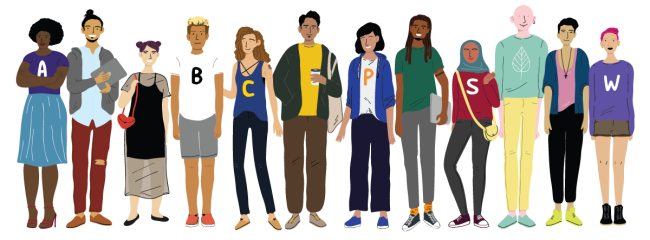You have /5 articles left.
Sign up for a free account or log in.

From the "Six Colleges" website
Stereotypes of Asian Americans are pervasive in our society: those in high school are all third or fourth generation from the time their families immigrated to the United States. The students are super smart and are all eyeing Ivy League universities. Most of the students live in wealthy suburbs and don’t need much aid to pay for college.
Now consider this statistic from two Common Application reports being released today:
Only 9 percent of Asian students who have roots in Japan request a fee waiver (which the Common App gives to low-income students). However, for others who identify as South Asian and have roots in Sri Lanka, Nepal and Bangladesh, the figure is 60 percent.
And that is not the only example. “Native Hawaiian or other Pacific Islander applicants indicating backgrounds in Samoa (47 percent) have far higher rates of fee waiver receipt than applicants indicating backgrounds in Guam (14 percent),” the report said. “Likewise, American Indian or Alaska Native applicants enrolled in the South Dakota Oglala Sioux tribe have the highest rates of fee waiver receipt across all detailed background groups (73 percent) while applicants enrolled in the Oklahoma Cherokee tribe have some of the lowest (13 percent).”
The report explains its approach this way: “Overall, we argue that this approach to reporting racial and ethnic categories allows us to speak with far greater nuance about the changing college applicant pool and highlights the important detail and context that is lost within the standard racial/ethnic categories that are broadly used.” The report added, “what we offer here is strong evidence that the applicants grouped under these standard categories are both highly diverse and constantly changing in composition, limiting the usefulness of such categories and putting higher education leaders/practitioners at risk of relying on outdated assumptions to guide crucial decision-making about campus diversity, staffing needs for student supports, fiscal projections, and more.”
Many colleges consider applicants’ race or ethnicity in admissions decisions—at least until the Supreme Court rules on challenges to such admissions policies—and the reports applaud them for doing so. But the reports look at a variety of factors about applicants to warn colleges that race alone may not tell the whole story.
Among the findings of the reports:
- There are “large and meaningful differences” within each standard racial/ethnic category for nearly all indicators of individual resources, college readiness and application behavior examined for domestic applicants in the 2021–22 season.
- In general, these differences within categories were largest for Asian, American Indian or Alaska Native, and multiracial applicants.
- Differences in key indicators within standard racial/ethnic categories “were often as large as, or larger than, the difference between [underrepresented minority] and non-URM applicant averages.” The reports said that Asian applicants indicating background in Cambodia “generally aligned more closely with URM applicant averages.”
- Asian applicants with backgrounds in India, China, Japan and Korea “tended to rank most favorably across measures. Asian applicants indicating backgrounds in Cambodia, Vietnam, the Philippines, and other [countries in] South and Southeast Asia tended to rank least favorably.”
- Multiracial applicants identifying as Asian and white “ranked most favorably across nearly every measure examined.” But multiracial applicants who identified as some combination of historically underrepresented populations such as American Indian or Black “tended to rank least favorably.” In one example, multiracial applicants identifying as Asian and white have one of the highest SAT score averages across all groups, at 1354, while multiracial applicants identifying as Black or African American and Native Hawaiian or Other Pacific Islander applicants have one of the lowest, at 1093.
- There was “far less consistency in which tribal affiliations among American Indian or Alaska Native applicants tended to rank most or least favorably across measures as compared to detailed background differences in other standard categories.” However, “differences within the American Indian or Alaska Native category were often the largest of any racial/ethnic category across several key measures like first-generation status and estimated household income.”
Brian Heseung Kim, a data scientist at the Common App and lead author of the reports, said they show that “there is a lot of nuance to be appreciated” when colleges consider race.
He said the Common App looked only at domestic applicants for the studies, but the same differences could be found among international applicants as well. And such studies will focus attention on the fact that Indian students are overtaking Chinese students in enrollment this year, he said.
It is “very misguided” to think every African American is like every other one, he said. Or every Asian American, he added.
“Yes, it would be nice if this was a simple picture,” he said. “But race/ethnicity is complex.”




